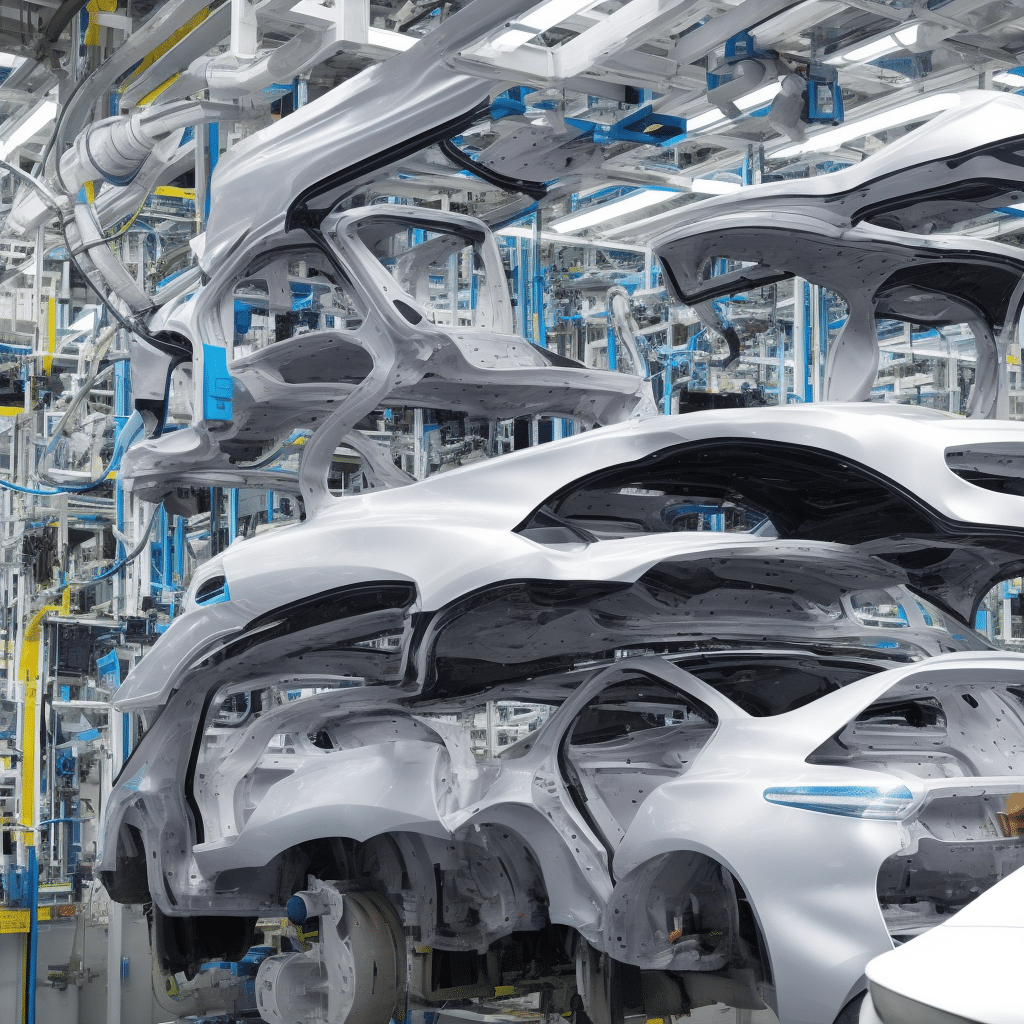What Are the Latest Trends in Sustainable Automotive Technologies?

The automotive industry is a dynamic ecosystem that continually evolves to meet the growing needs of our society. As we grapple with the global climate crisis and urbanization, finding sustainable solutions for mobility is of paramount importance. Consequently, the vehicle manufacturing sector is focusing its energies on emerging technologies to drive sustainable mobility. The future of cars hinges on a handful of key trends, including electric vehicles, autonomous driving, advanced safety systems, and data-driven connectivity. This article will delve into the latest trends in sustainable automotive technologies.
Electric Vehicles (EVs): The Future of Mobility
Electric vehicles are at the forefront of the drive towards a sustainable future. These cars, powered by electricity instead of traditional fossil fuels, are a viable solution to reduce our carbon footprint. They are more efficient, produce fewer emissions, and are less expensive to operate and maintain than their petrol or diesel counterparts.
Dans le meme genre : VPN for gamers: maximise your security and connection speed
There has been a significant increase in the production of electric vehicles in recent years. This is due in part to considerable advancements in battery technology, such as improvements in energy density and charging speeds, coupled with declining prices. The automotive industry is also exploring alternative sustainable energy options like hydrogen fuel cells.
Besides, government incentives and regulations are encouraging the switch from conventional cars to EVs. For instance, several countries and cities have announced future bans on the sale of new internal combustion engine (ICE) vehicles.
A lire en complément : How to Safely Perform Off-Road Driving in a Standard Vehicle?
Autonomous Vehicles: Changing the Face of Driving
Autonomous vehicles have the potential to revolutionize the way we travel. They are equipped with advanced technology systems that allow for self-driving, with minimal or no human intervention. Notable features include sophisticated sensors, high-resolution cameras, radar, and lidar, along with advanced AI algorithms to interpret this data and make driving decisions.
The primary motivation behind developing autonomous vehicles is to improve safety on the roads. Human error is responsible for an overwhelming majority of road accidents. Autonomous vehicles can eliminate these errors, as they always follow traffic rules and never get distracted or tired.
While fully autonomous cars are not yet mainstream, many vehicles on the road today have semi-autonomous features. Examples include adaptive cruise control, lane keep assist, and automatic emergency braking. Testing of fully autonomous vehicles is ongoing, and we can expect to see them on the roads in the not-too-distant future.
Advanced Safety Systems: Protecting Lives on the Road
Safety is a top priority for the automotive industry, and advanced safety systems are playing a crucial role in enhancing vehicle safety. These systems use technology to predict potential dangers and protect the vehicle’s occupants and other road users.
One such system is the Advanced Driver-Assistance Systems (ADAS), which include features such as blind-spot detection, forward-collision warning, and automatic emergency braking. These systems use sensors and cameras to monitor the vehicle’s surroundings constantly, provide warnings, and in some cases, take action to prevent accidents.
Another significant advancement in safety technology is Vehicle-to-Everything (V2X) communication. This technology allows vehicles to communicate with each other and the surrounding infrastructure, providing drivers with real-time information about road conditions, traffic, and potential hazards.
Data-driven Connectivity: The Rise of the Connected Car
Connectivity is another key trend shaping the future of the automotive industry. Today’s cars are becoming increasingly connected, with features like infotainment systems, navigation, and telematics becoming standard.
These connected cars generate vast amounts of data, which can be analyzed and used to enhance various aspects of vehicle performance, safety, and the driving experience. For instance, data can provide insights into driving habits, which can be used to improve fuel efficiency, or predict potential mechanical issues before they become serious problems.
Connected cars also provide opportunities for new business models in the automotive industry. For example, car manufacturers can offer software-based services and updates, similar to the way smartphone manufacturers do. These could include updates to the vehicle’s infotainment system, advanced safety features, or even performance enhancements.
In summary, these trends illustrate the innovative ways in which technology is being leveraged to bring about a more sustainable future in the automotive industry. The focus on electric vehicles, autonomous driving, advanced safety systems, and data-driven connectivity will continue to drive the transformation of the industry in the years to come, creating a safer, cleaner, and more efficient mobility ecosystem.
Shared Mobility: Redefining Travel Habits
Shared mobility, a transformative trend in the automotive industry, is essentially a service that allows users to have short-term access to transportation modes on an as-needed basis. It includes car-sharing, ride-sharing, bike-sharing, and platform-based ride services. The trend is expected to grow exponentially, driven by factors like urbanization, increasing digitalization, the demand for cost-effective mobility options, and a robust supply chain.
Shared mobility services offer several benefits, including the potential to significantly reduce the number of vehicles on the road, lower emissions, and reshape urban transportation. When combined with electric vehicles and autonomous driving technology, shared mobility can offer even more sustainable, efficient, and convenient travel options.
For instance, autonomous shared electric vehicles could offer a solution to the “last-mile” problem, the gap between a traveler’s final transit stop and their final destination. This could drastically improve the efficiency of urban transportation networks and reduce congestion. Organizations are also developing platforms to manage and integrate different types of shared mobility services, making it easier for users to plan and pay for trips that involve multiple modes of transport.
Moreover, data-driven connectivity plays a critical role in shared mobility. Real-time data can enhance the efficiency and convenience of these services, for example, by optimizing routes, matching drivers and riders, and providing real-time information about vehicle availability.
Software-Defined Cars: The Next Big Thing
Software-defined cars are the next big thing in the automotive industry. These vehicles are characterized by their advanced capabilities in connectivity, automation, and performance, all of which are largely controlled by software. In fact, modern vehicles have become complex software platforms, with millions of lines of code controlling everything from the infotainment system to advanced driver-assistance systems.
A software-defined car can receive over-the-air (OTA) updates, which means that the car’s features and functionality can be upgraded remotely without the need to visit a dealership. This allows for continuous upgrades and improvements, extending the vehicle’s life and potentially preventing costly recalls.
The development of software-defined cars also opens up new possibilities for personalization. Cars could be customized to suit each driver’s preferences, from seat and mirror positions to temperature controls and entertainment options. This heightened level of personalization can significantly enhance the driving experience.
In addition, software-defined cars play a crucial role in connected vehicles and autonomous driving. They can integrate with surrounding infrastructure and other vehicles, process large amounts of data in real time, and make complex decisions, all of which are crucial for safe and efficient autonomous driving.
Concluding Thoughts: Shaping the Future of the Automotive Industry
In conclusion, the automotive industry is on the brink of a technological revolution. Electric vehicles are becoming more common, autonomous vehicles are no longer just science fiction, advanced safety systems are saving lives, and data-driven connectivity is reshaping the way we think about cars.
The emergence of shared mobility and software-defined cars are expected to further accelerate this transformation. These trends will undoubtedly have a profound impact on how we travel, leading to a safer, cleaner, and more efficient mobility ecosystem.
Additionally, as we move towards a circular economy, sustainable automotive technology will continue to evolve, with additive manufacturing, automotive electronics, and other innovative technologies playing a pivotal role.
These industry trends represent not just the future of the automotive industry, but also a vision of a more sustainable world. The transformation is already underway, and it is exciting to speculate about what other innovations lie just around the corner. The automotive industry, in its relentless pursuit of a sustainable future, continues to be a hub for technological innovation and progress. The road ahead is long, but the journey promises to be an exhilarating one.
